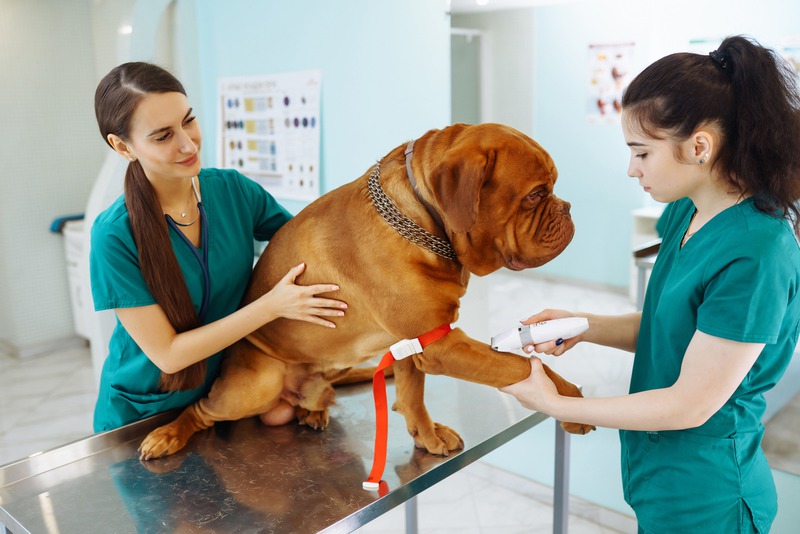When managing the health of large animals, it’s crucial to be aware of the various orthopedic conditions that can affect them. Horses, cows, sheep, and other livestock are susceptible to a range of musculoskeletal disorders that can significantly impact their well-being and productivity. As we take a closer look at these conditions, we’ll aim to provide you with insights on common ailments, from the basics of ligament injuries to the complexities of joint afflictions. So, let’s talk about the orthopedic hurdles these majestic creatures often face and how they are addressed.
Common Orthopedic Conditions in Large Animals
Large animals, especially those involved in heavy-duty tasks or sports, often suffer from orthopedic issues. These conditions may arise due to overuse, genetic predisposition, trauma, or simply the wear and tear of daily activities. Here are some of the most prevalent orthopedic conditions these animals encounter:
-
Osteoarthritis: Osteoarthritis is a common degenerative joint disease that can afflict large animals, especially as they age. It’s characterized by the gradual loss of cartilage, leading to painful bone-on-bone contact within joints. Symptoms may include stiffness, swelling, and a noticeable decrease in activity levels.
-
Laminitis: Laminitis is a serious and often painful condition in horses that affects the hooves. It’s caused by inflammation of the laminae, the sensitive structures that attach the hoof to the underlying bone. If not managed properly, laminitis can lead to lameness or even necessitate euthanasia.
-
Fractures: Just like humans, large animals can experience fractures. These can range from simple, clean breaks that heal with proper immobilization to complex fractures that might require surgical intervention. Rapid diagnosis and treatment are key to a successful recovery.
-
Tendon and Ligament Injuries: Active animals are prone to injuries of tendons and ligaments. Common issues include tendonitis and ruptured ligaments, which can dramatically affect an animal’s ability to move. Swift and effective treatment is required to minimize long-term damage and ensure the best possible outcome.
Dealing with these conditions often requires the expertise of a livestock veterinarian who is well-versed in the anatomy and physiology of large animals. They can provide a host of treatments ranging from conservative management to surgical options.
Treatments and Management Strategies
Managing orthopedic conditions in large animals involves a combination of expert care, rehabilitation, and sometimes surgery. Here’s how these conditions are typically treated:
-
Medical Management: Non-surgical options such as anti-inflammatory medications, pain relief drugs, and joint supplements are often the first line of defense. These treatments help to manage pain and inflammation and can slow the progression of degenerative conditions like osteoarthritis.
-
Surgical Interventions: When an injury or condition is beyond the help of medical management, surgery may be recommended. Procedures can range from arthroscopic surgery to correct joint problems to more invasive surgeries for severe fractures.
-
Rehabilitation: Post-treatment rehabilitation is crucial to help an animal recover fully. This may involve physical therapy, controlled exercises, and possibly alternative therapies like acupuncture or chiropractic care.
-
Preventative Care: To prevent injuries, proper nutrition, regular veterinary check-ups, and an appropriate exercise regimen are critical. It’s also essential to provide a safe environment that minimizes the risk of injuries from falls or accidents.
Moreover, an orthopaedic vet specialist play a critical role in both the prevention and treatment of orthopedic conditions. They have specialized training in diagnosing and treating these types of conditions and can provide targeted care to affected animals.
Veterinary Labs Importance
Diagnosing and managing orthopedic conditions in large animals often requires sophisticated testing and imaging. Veterinary labs are equipped with the technology necessary to pinpoint issues and monitor progress through the treatment process. Musculoskeletal conditions often benefit from detailed imaging studies like X-rays, MRI, or CT scans, which can all be handled by a well-equipped vet lab.
In this context, it’s worth mentioning that websites like https://www.meadowvistavet.com/site/veterinary-lab-meadow-vista provide information about the importance of vet labs in maintaining the health and well-being of large animals. These resources are helpful for anyone looking to understand the role laboratories play in veterinary medicine.
When to Consult a Professional
If you notice any signs of lameness, swelling, or behavioral changes in your large animals, it’s crucial to consult with a professional immediately. Early intervention can often prevent more severe issues and help maintain the animal’s quality of life.
Final Thoughts
Large animals are prone to a range of orthopedic conditions that can affect their health and productivity. From arthritis to fractures, these conditions require prompt and expert care. Whether through medical management, surgical intervention, or preventative strategies, the goal is always to ensure the well-being of these valuable animals. It’s imperative to work with trained veterinarians, utilize the resources that vet labs provide, and seek the counsel of orthopedic specialists when needed. Understanding these common conditions and their treatments helps in safeguarding the health of the large animals in our care.




